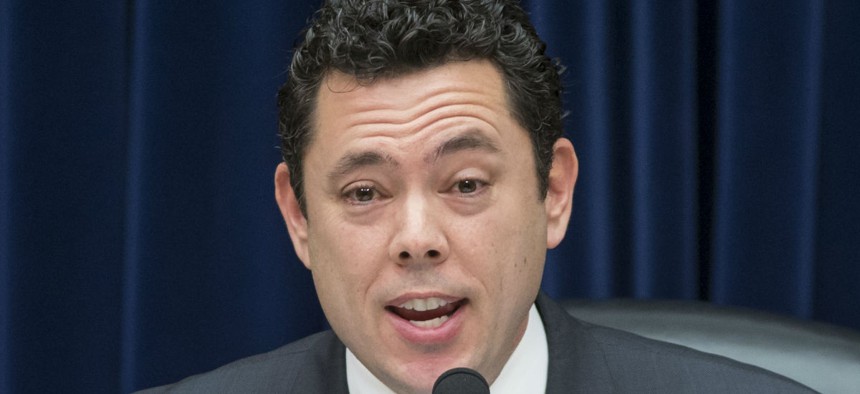
Rep. Jason Chaffetz, R-Utah, chairman of the House Oversight and Government Reform Committee. J. Scott Applewhite/AP
Congressional Panel Investigates Over-Income Families in Public Housing
House oversight chairman wants information from HUD on waiting lists and residents who earn more than the income threshold in their area.
The head of a House panel wants information from the Obama administration on how many over-income families live in public housing—and how many needy families are still on waiting lists for assistance.
Oversight and Government Reform Committee Chairman Rep. Jason Chaffetz, R-Utah, wants the Housing and Urban Development Department to hand over by Feb. 10 all documents related to over-income public housing residents going back to October 2013, and wants a briefing on the issue for congressional staff by the end of this week. Chaffetz also requested the “annual number of over-income families and families on waiting lists for each year since 2005 for each public housing authority that participates in HUD’s public housing program,” according to his Jan. 27 letter to Secretary Julian Castro.
A controversial HUD inspector general report released in July estimated that the department would pay $104.4 million over the next year for public housing units occupied by over-income families that could otherwise be used for low-income people. HUD disputed that figure, saying the IG’s methodology to estimate the subsidy cost of housing over-income families contained a “serious flaw.”
The report, which attracted attention from Capitol Hill, included some extreme examples of over-income families living in public housing. In one case in New York City, a family of four that has been living in public housing since 1988 had an annual household income of $497,911 in 2013. But the number of over-income residents identified in the audit represented just 2.6 percent of all public housing households, and in most cases the families in question were over-income by less than $10,000. The term “over-income” applies to those public housing households that earn more than the income threshold established for their locality.
HUD would not comment on the Chaffetz letter. “Our protocol is always to respond directly to the requestor,” said department spokesman Jereon Brown. The committee had not yet received a response as of Jan. 29, said Chaffetz spokeswoman MJ Henshaw.
Under HUD regulations, once accepted into public housing, individual households and families can stay as long as they like regardless of increased earnings, provided they comply with rental agreements and remain good tenants. When a family in public housing becomes over-income, they no longer receive a subsidy from the government for their rent; they pay the unit’s full rent themselves.
HUD has said public housing authorities already have the ability to evict over-income tenants. A 2004 HUD rule allows PHAs to move families in public housing to the private market if they earn more than the income limit, “allowing authorities to address over-income families within the context of their own unique demographic and economic situations,” the IG report said.
In September, HUD sent PHAs a letter reminding them of their authority and flexibility in evicting over-income households. “HUD strongly encourages PHAs to utilize the discretion available to them to remove extremely-over-income families from public housing,” wrote Lourdes Castro Ramirez, HUD’s principal deputy assistant secretary for Public and Indian Housing, in the Sept. 3 letter. Ramirez recommended PHAs use some available tools to deal with the issue, including using the local area median income for program income limits instead of the national AMI, which HUD uses in certain markets with significantly higher incomes. HUD also suggested PHAs create a “preference for return” to public housing for those over-income households that are evicted if their income drops after moving out.
There are more than 3,000 public housing authorities across the country. Many PHAs count on the rent money from over-income families to help boost their budgets.
HUD told auditors that if all over-income families were removed from public housing, it would need to request “nearly $116.5 million more in public housing operating subsidies annually,” according to the IG report. The presence of such households also helps de-concentrate poverty in public housing, and create sustainable mixed-income communities, according to HUD, PHAs and affordable housing advocates.
NEXT STORY: What Exactly Do Americans Consider 'Success?'







